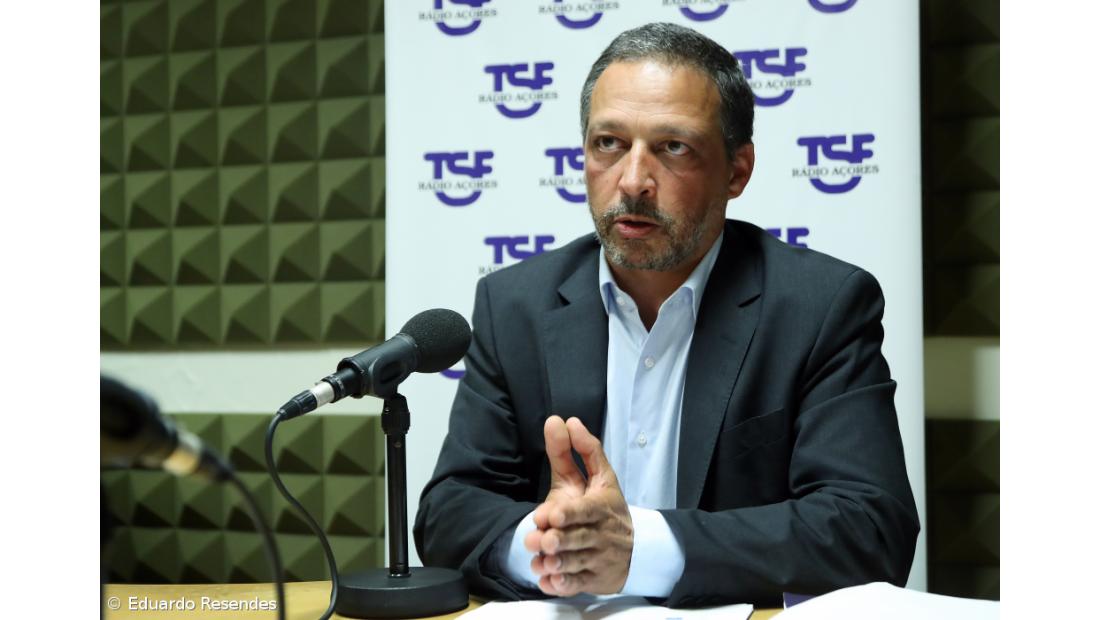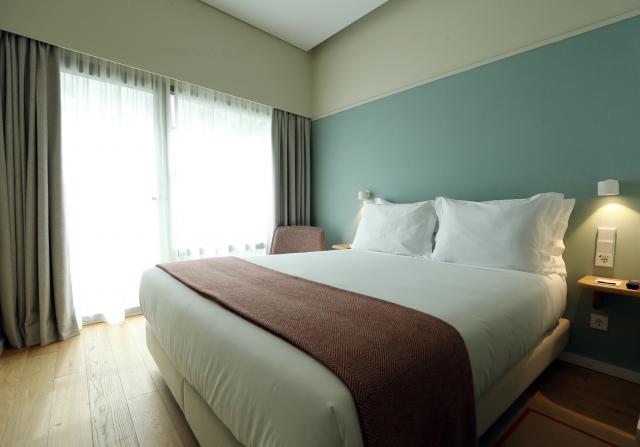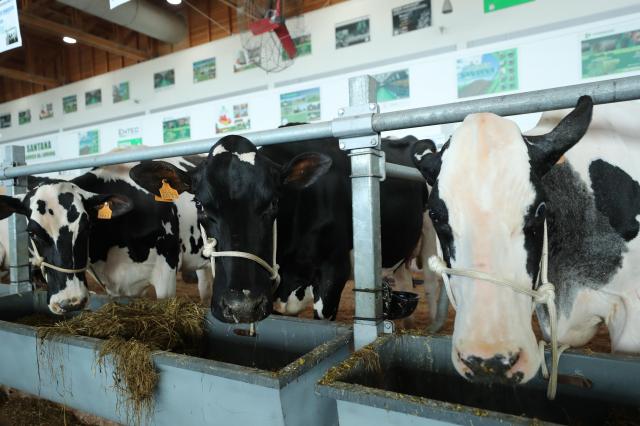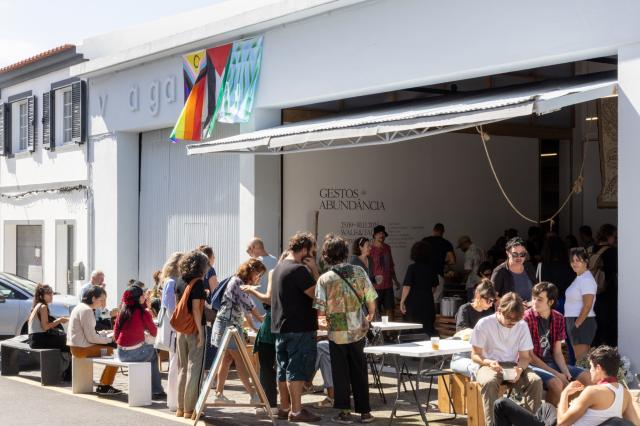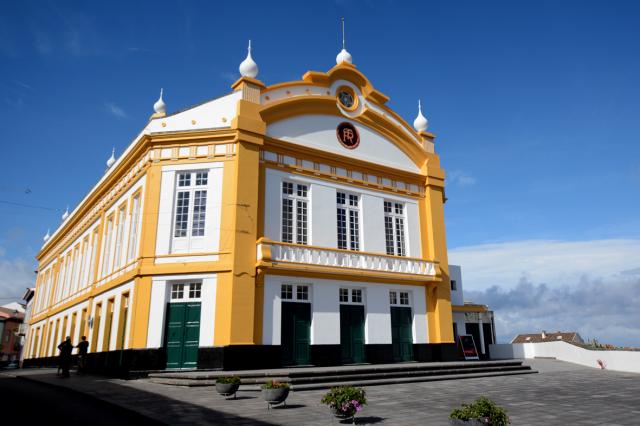There are very strong opinions about the new submarine cable network in the Azores, and it is important to clarify this issue, which raises multiple questions. Let's start by looking at the current model, which is at the end of its useful life. How has this model worked?
We currently have a submarine cable system that uses two international cables: the Columbus III cable for the Lisbon/São Miguel connection, which is scheduled to end its useful life in 2024; we also have a cable connecting the Azores to Madeira, which will end its useful life in 2028, and an international cable, the Atlantis II, which makes the Madeira/Lisbon connection.
This is a triangle configuration: Carcavelos/São Miguel, Madeira, and then Lisbon. There is a redundancy here, so that there is no connectivity cut, because not rarely we are operating either in the connection via Madeira or in the direct connection to the mainland, due to maintenance or other operations.
Regarding the new model, it foresees a direct connection from the mainland to Terceira island and from Terceira to São Miguel island, keeping the indirect connection from the mainland to São Miguel, via Madeira. How was the decision made to configure it this way?
I remind you that the Region joined a working group chaired by Anacom (National Communications Authority) in May 2019. This group met seven times between July and December 2019 and was mandated by the Government of the Republic to study the new CAM solution (Mainland/Azores/Madeira) in the submarine cable connection. About 15 experts and entities were heard, in order to produce a report – which is not public and which was presented to the Ministry of Infrastructures. It consists of 25 volumes, and there are 12 recommendations.
These recommendations had the endorsement of all the participants in the working group, including the Regional Government at the time (the previous government, led by the Socialist Party). I participated at the time in most of the meetings, accompanying the then Regional Director for Public Works and Communications, Frederico Sousa. The recommendations of this report, although it is not public, include the need to have a decision about the new CAM ring by the first quarter of 2020. This recommendation was not met.
But there was also the recommendation that, by the end of the first quarter of 2020, a position should be taken on the construction of an Atlantic CAM Platform, i.e., moving from a reality in which we only have a submarine cable connection to a new infrastructure with more potential in the future. And there were recommendations such as the inclusion of services in the infrastructure, particularly in terms of seismic and tsunami detection, but also the need for the cables to have at least six pairs of optical fiber and not just one, as they currently do.
In the Azores, two distinct mooring points were recommended, so that the decision would be made by whoever would implement the project, in this case IP Telecom, which was mandated by the Ministry of Infrastructure.
Clearly, there was a recommendation that there should be two distinct islands, for resilience reasons, because if we only have moorings in São Miguel, even if they are a few kilometers apart, in the event of a seismic crisis, such as the one that happened in São Jorge, for example, all of the Azores could be isolated from the rest of the world in terms of digital connectivity.
The new configuration means that if there is a problem, be it on São Miguel or on Terceira, the Azores will still have access to the CAM ring, because it is unlikely that there will be simultaneous earthquakes or volcanoes on both islands at the same time.
But why was this solution considered to be the best for the Azores?
This is the solution that the Azorean Regional Government believes respects the 12 recommendations of the working group led by Anacom.
In 2021, when IP Telecom was mandated for this process and contacted both Autonomous Regions, as well as other partners of the working group, we were confronted with a solution that 'took no account' of the recommendations issued by the working group.
We opposed the solution presented to us, which was the same as the current one: an 'economic' solution that did not contemplate the 'smart' component of data collection through sensors in the cables, it contemplated only two pairs of fiber in each cable and only one mooring in each Region. We then said that this did not comply with the recommendations, so our involvement in this process was to fight for the working group's recommendations to be respected.
If the solution is São Miguel/Terceira/Madeira or if it is Terceira/São Miguel/Madeira, that was already IP Telecom's choice... But this (the chosen solution) is a good solution, it is a solution that does not harm any island and favors the Azores as a whole.
The São Miguel Island Council said that this solution harms São Miguel. One of the arguments is the increase in the latency period by two milliseconds. Since São Miguel is the island responsible for the vast majority of communications generated in the Azores, is this factor relevant?
To cite an example that has already been given in this discussion, this is the same as saying that, in an airplane landing in Lisbon, the passengers seated at the front arrive before than those seated at the back... Two milliseconds have no economic expression and no economic impact.
In fact, this solution reduces latency (the time it takes to send a data packet from one point to another) because it is a more technologically advanced solution. In addition, the increase in bandwidth that this new submarine cable will bring, which is about 40 times what we currently have in connectivity with the continent, will allow less congestion in access to the submarine cable by terrestrial networks. And this alone is already a great gain in terms of performance.
Also the issue of two milliseconds may be fallacious, to the extent that someone who has a good internet connection in Ponta Delgada may have a lower latency than someone who is in Praia da Vitória, for example, 'consuming' these two milliseconds on the terrestrial network.
I would also like to mention that the sensing component of the submarine cables is fundamental to develop scientific knowledge and thus promote the settlement of the scientific community here in the Azores.
Finally, on the subject of São Miguel, I would like to clear up the misconception that the Regional Government has decided to centralize the cable in Terceira and install services and infrastructure there. This is not true, and it never happened! What the Regional Government wanted was to guarantee that São Miguel and Terceira were connected to the new submarine cable system because they are the two biggest traffic centers in the Region.
Who will be supplied with the data the new submarine cables will collect?
This is a question that we also want to see answered by the Ministry of Infrastructures. These new cables integrate a solution in the repeaters with five sensors that allow seismic and tsunami detection, but also allow to determine pressure, temperature and conductivity (measuring water salinity, for example). We will thus have the largest real-time laboratory in the Atlantic, collecting data that is worth a lot of knowledge and money.
That's why one of the Regional Government's concerns is that it should not be delayed any further and that the Azores should have access to this data, starting with the University of the Azores, and that it should not only be made available to entities on the mainland.
Who will ensure the operation of the current submarine cable system until the implementation of the new CAM ring? This is one of our concerns.
Altice has already said it is available to guarantee the maintenance of the current submarine cables...
Yes, and it's good that Altice is available... But it takes someone to contract with Altice. There is a statement from Anacom which shows willingness to extend the life span of the current solution, also because only in 2026, probably, will the infrastructure be implemented.
Therefore, it is essential that the Ministry of Infrastructure guarantees the operation of the current solution.
Is there a risk of a 'blackout' in the Azores?
I would say that if the Ministry of Infrastructures does not contract with Altice the extension of the current solution until 2028, this risk is real, because the current infrastructure cannot be left without support and maintenance.
Being at the end of its useful life, this infrastructure will increasingly need support and maintenance. The cable is not expected to break down the day after it reaches the end of its useful life, but, from then on, the infrastructure will have different maintenance needs than it does now. Therefore, I don't believe that the Republic will not take care of the interests of the Autonomous Regions in this matter.
At what stage is the process of replacing the inter-island ring?
The replacement of the inter-island submarine cable ring is a situation that truly concerns us. That is why we have already asked the Minister of Infrastructures to create a working group – as was the case with the CAM ring.
In this sense, we also have many demands regarding the connectivity that must be promoted with the other islands. We would have liked the two rings to go ahead at the same time and we pushed for this, but the Republic felt that the inter-island ring could be addressed right after the CAM ring. This is even though we felt that it would not be necessary to wait until the end of the new CAM ring to have developments regarding the inter-island ring as well.

